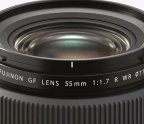NEWS IMAGING PRODUCTS & PROCESSES

New Canon Flagship DSLR Chases Mirrorless Speedsters
While a pro-level EOS R mirrorless camera is an inevitability (see separate news item), Canon is keeping faith with its dedicated pro DSLR users who will no doubt be mightily pleased with the new EOS-1D X Mark III. It’s targeted at high-speed shooters who still prefer to use an optical viewfinder rather than an EVF. Canon has gone all-out to make its new reflex flagship the fastest DSLR ever, able to match the fastest mirrorless cameras… at least in terms of full resolution. The 1D X Mark III has a new FP shutter assembly and a new reflex mirror mechanism to enable faster recycling with reduced blackout periods between frames. With the optical viewfinder, it’s capable of 16fps and, with mirror lock-up, this increases to an impressive 20fps, and both with continuous AF/AE adjustment. Adopting the latest-gen CFexpress memory cards – there are dual slots – enables burst lengths of 1,000 frames or more no matter what the capture setting. Canon has also made sure that the EOS-1D X III is also very attractive to video users, enabling 5.5K/50p (or 60p in the NTSC standard) 12-bit RAW capture or 10-bit 4K DCI/50p with Canon Log, both internally and both uncropped with full pixel read-outs with no pixel binning or line-skipping.

At the heart of the new DSLR is the immensely powerful, latest-generation DiG!C X processor – this is mated with a new CMOS sensor which has a total pixel count of 21.4 million (20.1 MP effective).
A new ‘High Detail’ optical low-pass filter is designed to minimise moiré patterns with less impact on edge sharpness. A first is the addition of a 10-bit HEIF (High Efficiency Image Format) capture mode which essentially delivers ‘real’ HDR images thanks to an increased dynamic range and colour gamut. In-camera conversion to 8-bit RAW files is available as an alternative to using HDR procession which often delivers artificial-looking results.
With advances in autofocusing per-formance one of the big selling points of high-end mirrorless cameras, Canon has ensured its flagship DSLR is competitive. The conventional system employs 191 phase-difference detection AF points – of which 155 are cross-type arrays – and all can operate at a maximum lens aperture of f/8.0. In live view, Canon’s Dual Pixel CMOS AF gives 3,869 measuring points (in 525 selectable areas), representing 100 percent frame coverage vertically and 90 percent horizontally. Sensitivity extends down to -6.0 EV at ISO 100 and all points operate at maximum lens apertures down to f/11.
New subject tracking algorithms use AI-based ‘deep learning’ for object recognition, with the availability of a People Priority mode. On the outside, the EOS-1D X Mark III is little changed from its predecessor in terms of styling or control layout with the exception of a new ‘Smart Controller’ touch-type control integrated into the AF-On buttons. These are designed to enable faster AF point selection than the conventional joystick type controls (which the Mark III retains). The bodyshell is magnesium alloy with full weather sealing and the 1D X III has a built-in GPS receiver, as well
You’re reading a preview, subscribe to read more.
Start your free 30 days

